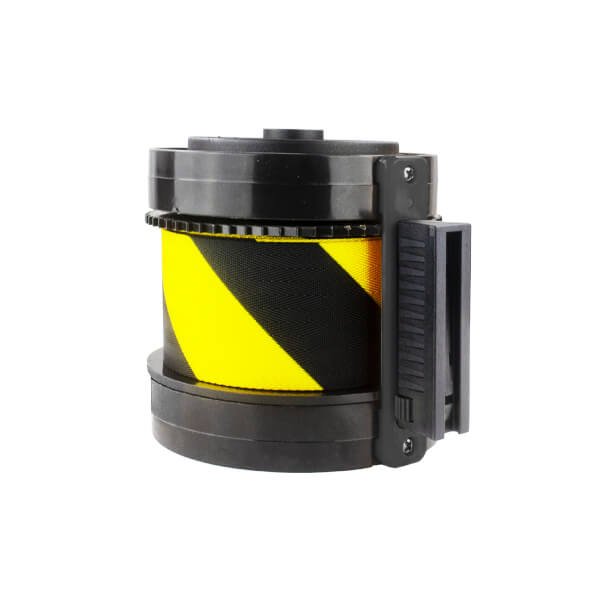The Role of Retractable Safety Barriers in Emergency Evacuation Plans

In an era where safety is of paramount importance, the integration of retractable safety barriers into emergency evacuation plans has become a critical consideration for businesses and institutions alike. These barriers serve as more than just physical structures; they are vital components that facilitate organized, efficient, and safe evacuations during emergencies. This article delves into the multifaceted role of retractable safety barriers in emergency evacuation plans, examining their effectiveness, advantages, and best practices for implementation.
Understanding Retractable Safety Barriers
Retractable safety barriers are versatile, portable structures designed to provide temporary separation or delineation in various environments. Often made from durable materials, these barriers can be quickly deployed or retracted, making them ideal for emergency situations where time is of the essence. Their primary function is to direct pedestrian traffic, restrict access to hazardous areas, and enhance overall safety during evacuations. The adaptability of these barriers allows them to be utilized in various settings, including commercial buildings, schools, airports, and public venues.
The Importance of Emergency Evacuation Planning
Emergency evacuation plans are essential for ensuring the safety of individuals in times of crisis. Whether it’s a fire, natural disaster, or any other emergency, having a well-practiced evacuation plan can save lives and minimize injuries. According to the National Fire Protection Association (NFPA), nearly 3,400 people died in home structure fires in the United States in 2019 alone. This highlights the urgent need for effective evacuation strategies. Incorporating retractable safety barriers into these plans can significantly improve the flow of people exiting a building, thereby reducing chaos and confusion during emergencies.
Enhancing Safety and Organization
One of the standout features of retractable safety barriers is their ability to enhance safety and organization during evacuations. By creating distinct pathways, these barriers help guide individuals toward exits, minimizing the risk of bottlenecks and ensuring a smoother flow of people. For instance, in crowded spaces like stadiums or concert venues, retractable barriers can be strategically placed to direct crowds towards designated exits. This not only helps prevent panic but also ensures that emergency responders can access areas quickly and efficiently.
Compliance with Safety Regulations
Organizations are required to comply with various safety regulations, including the Occupational Safety and Health Administration (OSHA) standards. These regulations often stipulate the necessity of clear pathways and a well-defined evacuation process. Retractable safety barriers can play a crucial role in meeting these standards by providing clear signage and physical demarcation of safe routes. By implementing these barriers, businesses can demonstrate their commitment to safety and regulatory compliance, which can also reduce liability in the event of an accident.
Cost-Effectiveness and Efficiency
Investing in retractable safety barriers can be a cost-effective solution for organizations looking to enhance their emergency preparedness. Unlike permanent structures, retractable barriers are a more flexible option that can be deployed only when needed, thus saving on unnecessary expenses. Furthermore, their ease of use means that staff can quickly set them up without extensive training, allowing for efficient implementation of emergency plans. According to a study by the Safety Management Association, organizations that utilize temporary safety measures during emergencies report a 30% decrease in evacuation time, leading to better outcomes in crisis situations.
Training and Awareness Programs
The effectiveness of retractable safety barriers during emergencies relies heavily on staff training and awareness. Organizations must ensure that employees understand how to quickly and effectively deploy these barriers in an emergency. Regular training sessions, drills, and simulations should be conducted to familiarize staff with the evacuation plan and the role of the barriers. Involving employees in the planning and execution of these drills can enhance their confidence and readiness, ultimately leading to a more effective response during an actual emergency.
Real-World Applications
Numerous organizations have successfully integrated retractable safety barriers into their emergency evacuation plans. For instance, airports often use these barriers to manage passenger flow during evacuations, ensuring that individuals are directed toward the nearest exits without obstruction. Similarly, large corporate offices have implemented retractable barriers in stairwells to guide employees during fire drills. The success stories highlight the barriers' adaptability and effectiveness, demonstrating their potential to improve safety in diverse settings.
Challenges and Limitations
While retractable safety barriers offer numerous advantages, they are not without their challenges. One significant limitation is their reliance on human intervention; if barriers are not deployed correctly or in a timely manner, their effectiveness diminishes. Moreover, in scenarios where rapid evacuation is needed, retractable barriers may inadvertently slow down the process if not managed properly. Organizations must be vigilant in ensuring that there are contingency plans in place to address potential failures in the evacuation process.
Future Trends in Safety Barriers
The future of retractable safety barriers looks promising, with advancements in technology leading to smarter solutions. Innovations such as automated barriers that can be deployed via sensors or remote controls can enhance the efficiency of evacuation plans. Additionally, the integration of smart technology could allow barriers to communicate with emergency response systems, providing real-time data on crowd movement and exit utilization. As organizations continue to prioritize safety, it is likely that the role of retractable barriers will only become more prominent.
Conclusion
In conclusion, retractable safety barriers play a vital role in emergency evacuation plans, enhancing safety, organization, and compliance with regulations. Their ability to provide clear pathways for individuals during emergencies can significantly improve evacuation efficiency and outcomes. However, organizations must remain mindful of the challenges associated with their use and ensure that staff training and awareness are prioritized. As technology continues to evolve, the future of retractable safety barriers looks bright, promising even more effective solutions for emergency situations. By recognizing the importance of these barriers, organizations can create a safer environment for all individuals.
- Art
- Causes
- Crafts
- Dance
- Drinks
- Film
- Fitness
- Food
- Hry
- Gardening
- Health
- Domov
- Literature
- Music
- Networking
- Iné
- Party
- Religion
- Shopping
- Sports
- Theater
- Wellness


